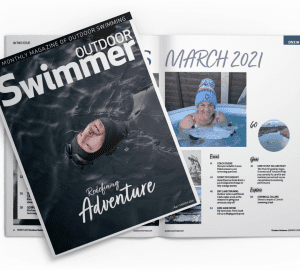Changes to Ice Mile rules
Image: Ram Barkai about to swim
In an email to members and interested parties on 11 February, the International Ice Swimming Association announced a couple of significant changes that may affect how, in future, swimmers can become recognised Ice Milers. The rule changes are as follows:
- The IISA board has decided, unanimously, that it will no longer allow Ice Mile events in open water courses.
- Ice Mile events will be only allowed in a pool course with a maximum of four swimmers per heat, with sufficient medical and recovery team to oversee the event; a pool course is limited to a minimum length of 25m and a maximum of 100m.
The reasons given for the changes are “safety and issues regarding qualifying and ratifying those attempts.”
We subsequently spoke to Ram Barkai, the founder and chair of the IISA about these changes and he clarified that they apply only to events, not to individual Ice Miles, and they are driven by concerns for swimmer safety and access to swimmers in case of trouble.
“Ice Miles can be swum anywhere. And, the more interesting, fascinating, beautiful places, the better. As long as safety is in place. The changes refer to “ICE MILE Events” where you have a batch of swimmers attempting ice mile at the same time.”
For the purposes of an Ice Mile, a pool is defined as a body of water between 25m to 100m across that has to have at least three sides where support and safety can walk around. It must have lanes and boards to push off and ladders to get in and out. This means that marina type structures in open water, provided they meet the criteria above, will be fine, as will pools cut into the ice of frozen lakes or rivers and outdoor pools such as Tooting Bec. Ice Miles can still go ahead in other venues, but with only one swimmer at a time.
“When I founded IISA I saw the Ice Mile as a personal challenge, not a race or an event,” says Ram. “The sport is attracting more and more people. If we want to grow, we need to manage the safety very strictly. When it comes to safety – no exceptions will be made. However, I don’t want to limit the sport or the human spirit of exploring what is possible so we are looking at other ideas where we can allow for swimmers to do extra, tougher challenges but in a safe environment.”
Find out more about the International Ice Swimming Association







